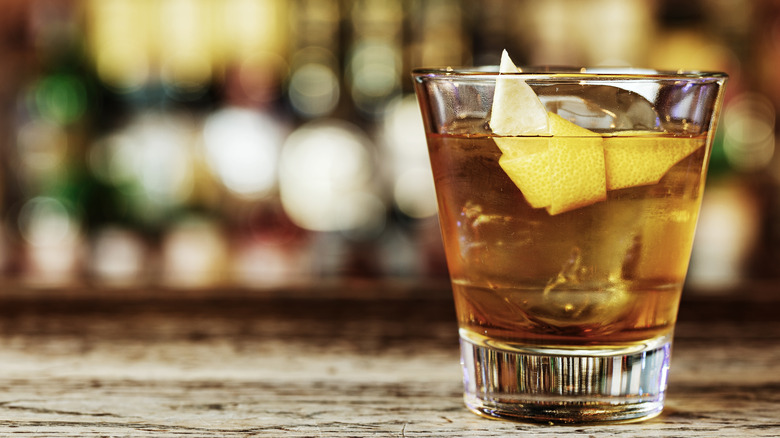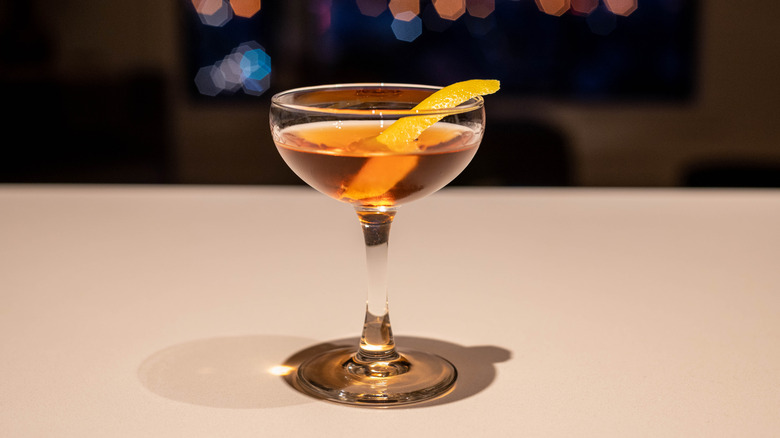Meet The Zazarac, The Sazerac's Super Complex Cousin
Have you ever been friends with somebody for a long time, only to discover years later that they actually have a brother that they never talk about? It's kind of a weird feeling. Today, we're getting weird — meet the Zazarac, the Sazerac's long-lost cousin that nobody ever seems to mention. It never really took off in a lasting way or established a name for itself (pun intended), and it doesn't share the New Orleans heritage of its similarly-named counterpart, either. In fact, the Zazarac is kind of a mutt.
Per the lore, the Zazarac originated sometime around 1890, not long after the Sazerac started gaining popularity. Perhaps unsurprisingly — but nonetheless fascinatingly — the Zazarac might have started as a spelling error, then evolved into a ripoff. (Some might even call it the pirate of the cocktail world.) News publications in the 1840s were running misspelled "Zazarac" ads for Sazerac de Forge & Fils' cognac, and later, other publications were writing about a misspelled "Sazarac Club." It wasn't until 1904 that the word "Zazarac" was used on purpose in reference to a cocktail. A Montana spirits purveyor began selling a line of knockoff bottled Sazerac cocktails and called it "Zazarac." So, what does the drink taste like, exactly? Just like its origin, the Zazarac's recipe has emerged as a topic of debate.
A cocktail that belongs to the wind
As Cajun foodies already know, the Sazerac is a spirit-forward combination of rye, absinthe, Peychaud's bitters, and lemon peel. The Zazarac is a similarly strong, punchy bourbon-based cocktail with Angostura bitters and a dash of absinthe. Like the Sazerac, Zazaracs are also served without ice in a chilled glass. This recipe comes from the 1910 cocktail book "Jack's Manual" by Jack Grohusko. But, in 1913, another cocktail book ("Manual of Mixed Drinks" by Jacques Straub) published a Zazarac recipe that added a lemon peel, orange bitters, and anisette.
Another Zazarac in "The Savoy Cocktail Book" of 1930 called for Bacardí rum. So, which one is it? No one seems to know for sure. Some contemporary versions fuse new and old, using rye or bourbon, anisette, light rum, anise-flavored pastis, orange, and Angostura bitters, and a lemon twist. This Frankenstein-ed recipe might have originated in the 1935 "Old Mr. Boston DeLuxe Official Bartender's Guide."
Before you write off the motley Zazarac for unoriginality, consider other popular drinks in the mainstream cocktail world — many of which are only separated by the difference of a single ingredient. Caipirinhas are made from cachaça, lime, and sugar; Swap the cachaça for tequila, and you've got a margarita. Similarly, the only major difference between a Manhattan and an old fashioned is the sweet vermouth. What we're saying is: Take a walk on the wild side — and don't knock it 'till you try it.

